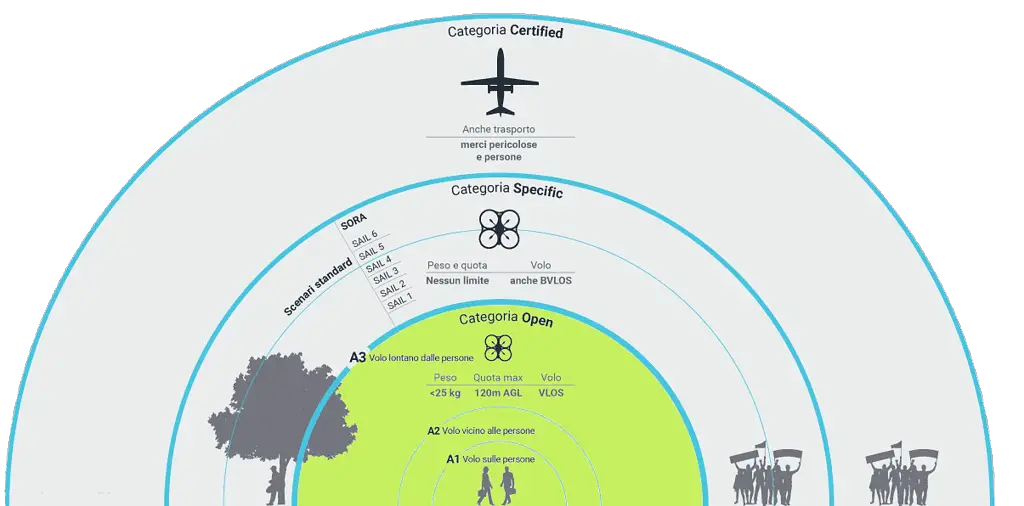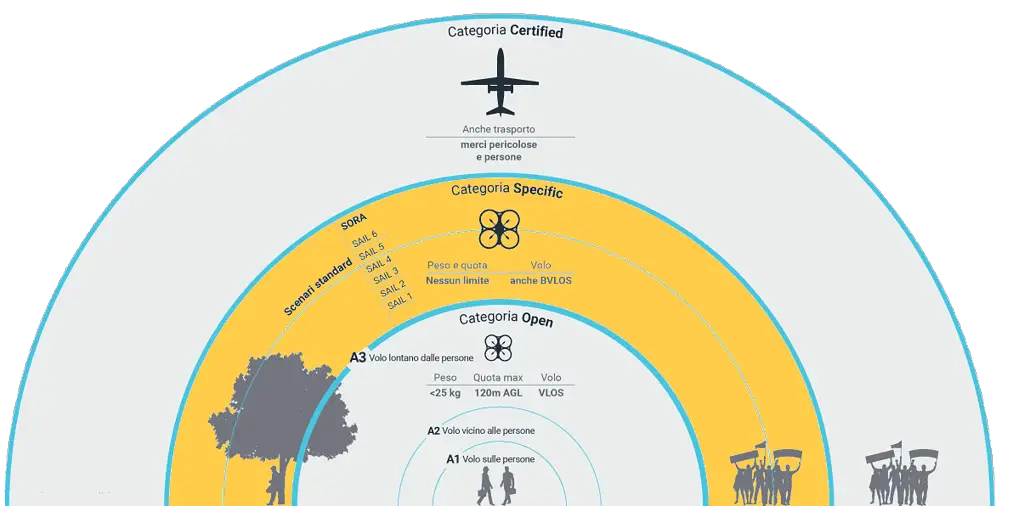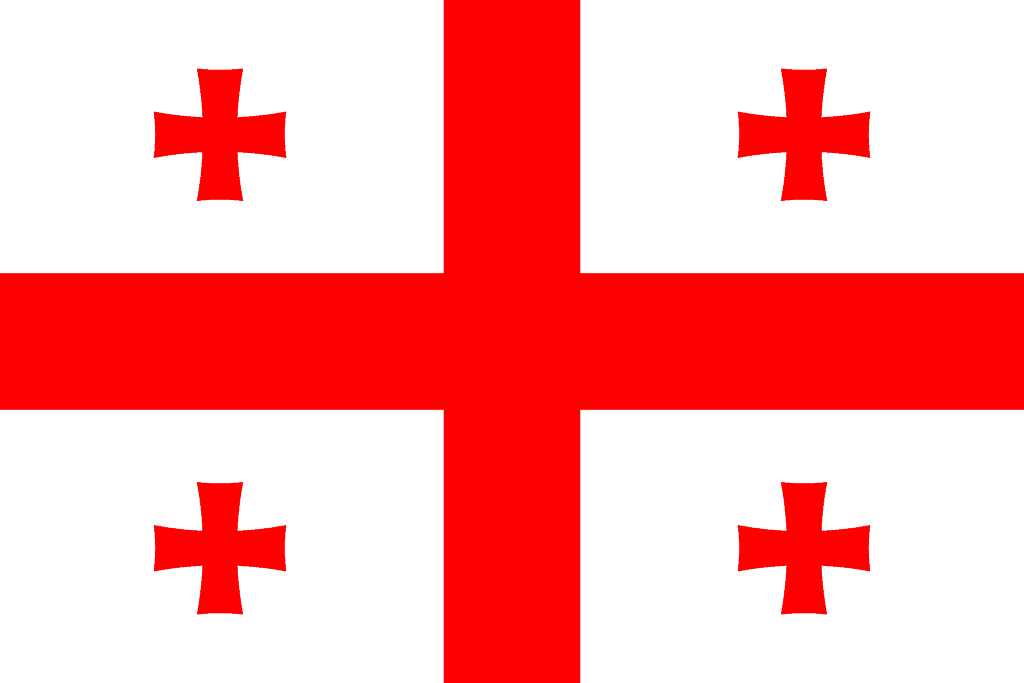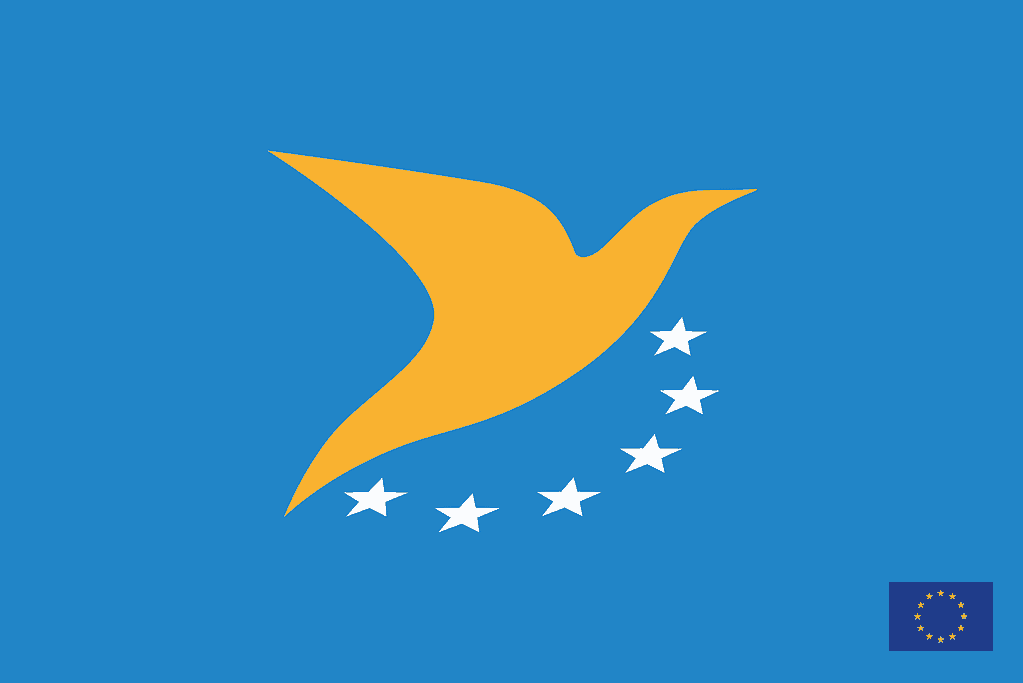NOTE: This page is for the Country of Georgia. For the State of Georgia in the USA, please go to this linked page: Drone Laws in the State of Georgia (USA)
Summary of Drone Laws in Georgia
Hobbyist Drone Laws For Residents of Georgia
Drone Operations in Georgia are currently regulated.
- Hobbyist drone flights are allowed in Georgia
- Hobbyist Georgia drone pilot license is not required
- Hobbyist Drone registration is required in Georgia for hobbyists
- Drone Remote ID is not required in Georgia for hobbyists
- Drone Insurance is not required but recommended for hobbyists’ drone operations in Georgia
Read below for more details on Hobbyist Drone Laws in the Country of Georgia and to find links to regulators and other credible sources!
Commercial Drone Laws For Residents of Georgia
Drone Operations in Georgia are currently regulated.
- Commercial drone flights are allowed in Georgia
- Commercial Georgia drone pilot license is required
- Commercial Drone registration is required in Georgia for commercial drone operators
- Drone Remote ID is not required in Georgia for Commercial Drone Operators
- Drone Insurance is required for commercial drone operations in Georgia
Read below for more details on Commercial Drone Laws in the Country of Georgia and to find links to regulators and other credible sources!
Drone Laws For Visitors To Georgia
Drone Operations in Georgia are currently regulated.
- Foreign visitor drone flights are allowed in Georgia
- Foreign visitor drone pilot license is not required
- Drone registration is required in Georgia for visitors/tourists
- Drone Remote ID is not required in Georgia for tourists
- Drone Insurance is not required but recommended for tourist drone operations in Georgia
Read below for more details on Drone Laws in the Country of Georgia for Visitors (Tourists) and to find links to regulators and other credible sources!
Drone Laws For Government Drone Operators in Georgia
Drone Operations in Georgia are currently regulated.
- Government drone flights are allowed in Georgia
- Government drone pilot license is required
- Drone registration is required in Georgia for Government operations
- Drone Remote ID is not required in Georgia for Government operations
- Drone Insurance is not required for Government drone operations in Georgia
Read below for more details on Drone Laws in the Country of Georgia for Government Drone Operations and to find links to regulators and other credible sources!
Agencies Responsible for regulating drones in Georgia
Drone Regulator in the country of Georgia: Georgia Civil Aviation Authority (GCAA)
UAS Laws – General rules for flying drones in Georgia
The Georgian agency responsible for drone safety, GCAA, has provided several internet-accessible details on flying for fun or work. The highlights are enumerated below. For more details go to the links above.
Are drones allowed in the country of Georgia?
According to GCAA, drone use is allowed in Georgia, subject to GCAA regulations. Read on for more details.
Here are the most important rules to know for flying a drone in Georgia:
Unmanned aircraft weighing less than 250 grams (.55 pounds), are exempt from most regulations, according to the GCAA.
- Under the supervision of an adult, children as young as 14 years old may operate drones. Children under the age of 13 may not use a drone.
- Avoid flying drones over structures, crowds, busy intersections, or high-tension power lines.
- The Pilot in Command must always maintain direct visual contact with the drone without assistance.
- Drones should not be flown over 400 feet above any physical terrain or body of water.
- Avoid flying drones close to planes or airports. Horizontal separation of at least 6 kilometers (3.7 miles) from any aerodrome is required.
- Using a drone to commit a crime is against the law.
- Flying a drone over public or private property for aerial photography is illegal. Under Georgian law, violations of one’s privacy rights are punishable.
- Liability insurance is required for drone operators.
- Drones should not exceed 25 kilograms (55 pounds) in weight and should fly at a maximum speed of 54 kilometers per hour (33 mph).
Registration:
Register any drone with a maximum take-off mass of more than 5 kg.
- The registration certificate is valid for the duration of the unmanned aerial vehicle’s existence and is perpetual. Once every two years, the Agency is authorized to request confirmation of the existence of an unmanned aerial vehicle.
- Each unmanned aerial vehicle entered into the database is assigned a unique five-digit identification number.
- Unmanned aircraft are registered using the “Unmanned Aircraft Registration Certificate.”
You must submit the following documents to the Agency to obtain a certificate:
- A statement;
- Proof of registration fee payment;
- A copy of the applicant’s identification document (if they are a natural person);
- Technical and flight characteristics documentation.
Classes of UAS
UAS are subdivided into 5 basic ‘classes’.
These classes provide a link to the operational subcategories as follows:
Requirements for a class C0 Unmanned aircraft system
A class C0 UAS shall comply with the following:
- have an MTOM of less than 250 g, including payload;
- have a maximum speed in level flight of 19 m/s;
- have a maximum attainable height above the take-off point limited to 120 m;
- be designed and constructed in such a way as to minimise injury to people during operation;
- be powered by electricity and have a nominal voltage not exceeding 24 V direct current (DC) or the equivalent alternating current (AC) voltage;
- if equipped with a follow-me mode and when this function is on, be in a range not exceeding 50 m from the remote pilot, and make it possible for the remote pilot to regain control of the UA;
Requirements for a class C1 Unmanned aircraft system
A class C1 UAS shall comply with the following:
- be made of materials and have performance and physical characteristics such as to ensure that in the event of an impact at terminal velocity with a human head, the energy transmitted to the human head is less than 80 J, or, as an alternative, shall have an MTOM of less than 900 g, including payload;
- have a maximum speed in level flight of 19 m/s;
- have a maximum attainable height above the take-off point limited to 120 m or be equipped with a system that limits the height above the surface or above the take-off point to 120 m or to a value selectable by the remote pilot;
- in case of a loss of data link, have a reliable and predictable method for the UA to recover the data link or terminate the flight in a way that reduces the effect on third parties in the air or on the ground;
- be powered by electricity and have a nominal voltage not exceeding 24 V DC or the equivalent AC voltage;
- have a direct remote identification that:
- allows the upload of the UAS operator registration number;
- ensures, in real time during the whole duration of the flight, the direct periodic broadcast from the UA using an open and documented transmission protocol;
- be equipped with a geo-awareness system that provides:
- an interface to load and update data containing information on airspace limitations related to UA position and altitude imposed by the geographical zones;
- a warning alert to the remote pilot when a potential breach of airspace limitations is detected; and
- information to the remote pilot on the UA’s status as well as a warning alert when its positioning or navigation systems cannot ensure the proper functioning of the geo-awareness system;
- provide the remote pilot with clear warning when the battery of the UA or its control station reaches a low level so that the remote pilot has sufficient time to safely land the UA;
- be equipped with lights for the purpose of:
- the controllability of the UA;
- the conspicuity of the UA at night;
- if equipped with a follow-me mode and when this function is on, be in a range not exceeding 50 m from the remote pilot, and make it possible for the remote pilot to regain control of the UA;
Requirements for a class C2 Unmanned aircraft system
A class C2 UAS shall comply with the following:
- have an MTOM of less than 4 kg, including payload;
- have a maximum attainable height above the take-off point limited to 120 m or be equipped with a system that limits the height above the surface or above the take-off point to 120 m or to a value selectable by the remote pilot;
- in the case of a tethered UA, have a tensile length of the tether that is less than 50 m and a mechanical strength that is no less than:
- for heavier-than-air aircraft, 10 times the weight of the aerodyne at maximum mass;
- for lighter-than-air aircraft, 4 times the force exerted by the combination of the maximum static thrust and the aerodynamic force of the maximum allowed wind speed in flight;
- unless tethered, in case of a loss of data link, have a reliable and predictable method for the UA to recover the data link or terminate the flight in a way that reduces the effect on third parties in the air or on the ground;
- unless tethered, be equipped with a data link protected against unauthorised access to the command and control functions;
- unless it is a fixed-wing UA, be equipped with a low-speed mode selectable by the remote pilot and limiting the maximum cruising speed to no more than 3 m/s.
- be powered by electricity and have a nominal voltage not exceeding 48 V DC or the equivalent AC voltage;
- unless tethered, have a direct remote identification that:
- allows the upload of the UAS operator registration number;
- ensures, in real time during the whole duration of the flight, the direct periodic broadcast from the UA using an open and documented transmission protocol;
- be equipped with a geo-awareness function that provides:
- an interface to load and update data containing information on airspace limitations related to UA position and altitude imposed by the geographical zones;
- a warning alert to the remote pilot when a potential breach of airspace limitations is detected; and
- information to the remote pilot on the UA’s status as well as a warning alert when its positioning or navigation cannot ensure the proper functioning of the geo-awareness system;
- provide the remote pilot with clear warning when the battery of the UA or its control station reaches a low level such that the remote pilot has sufficient time to safely land the UA;
- be equipped with lights for the purpose of:
- controllability of the UA;
- conspicuity of the UA at night;
Requirements for a class C3 Unmanned aircraft system
A class C3 UAS shall comply with the following:
- have an MTOM of less than 25 kg, including payload, and have a maximum characteristic dimension of less than 3 m;
- have a maximum attainable height above the take-off point limited to 120 m or be equipped with a system that limits the height above the surface or above the take-off point to 120 m or to a value selectable by the remote pilot;
- in the case of a tethered UA, have a tensile length of the tether that is less than 50 m and a mechanical strength of no less than:
- for heavier-than-air aircraft, 10 times the weight of the aerodyne at maximum mass;
- for lighter-than-air aircraft, 4 times the force exerted by the combination of the maximum static thrust and the aerodynamic force of the maximum allowed wind speed in flight;
- unless tethered, in case of a loss of data link, have a reliable and predictable method for the UA to recover the data link or terminate the flight in a way that reduces the effect on third parties in the air or on the ground;
- be powered by electricity and have a nominal voltage not exceeding 48 V DC or the equivalent AC voltage;
- unless tethered, have a direct remote identification that:
- allows the upload of the UAS operator registration number;
- ensures, in real time during the whole duration of the flight, the direct periodic broadcast from the UA using an open and documented transmission protocol;
- be equipped with a geo-awareness function that provides:
- an interface to load and update data containing information on airspace limitations related to UA position and altitude imposed by the geographical zones;
- a warning alert to the remote pilot when a potential breach of airspace limitations is detected; and
- information to the remote pilot on the UA’s status as well as a warning alert when its positioning or navigation cannot ensure the proper functioning of the geo-awareness system;
- unless tethered, be equipped with a data link protected against unauthorised access to the command and control functions;
- provide the remote pilot with clear warning when the battery of the UA or its control station reaches a low level such that the remote pilot has sufficient time to safely land the UA;
- be equipped with lights for the purpose of:
- controllability of the UA;
- conspicuity of the UA at night;
Requirements for a class C4 Unmanned aircraft system
A class C4 UAS shall comply with the following:
- have an MTOM of less than 25 kg, including payload;
- be safely controllable and manoeuvrable by a remote pilot following the manufacturer’s instructions, as necessary under all anticipated operating conditions including following the failure of one or, if appropriate, more systems;
- not be capable of automatic control modes except for flight stabilisation assistance with no direct effect on the trajectory and lost link assistance provided that a pre-determined fixed position of the flight controls in case of lost link is available;
Categories of UAS Flights

Open Category
Operations shall be classified as UAS operations in the ‘open’ category only where the following requirements are met:
- the UAS belongs to one of the classes set out in GCAA regulation or is privately built or meets the conditions defined in the regulation;
- the unmanned aircraft has a maximum take-off mass of less than 25 kg;
- the remote pilot ensures that the unmanned aircraft is kept at a safe distance from people and that it is not flown over assemblies of people;
- the remote pilot keeps the unmanned aircraft in VLOS at all times except when flying in follow-me mode or when using an unmanned aircraft observer as specified in the regulation;
- during flight, the unmanned aircraft is maintained within 120 metres from the closest point of the surface of the earth, except when overflying an obstacle, as specified in the regulation;
- during flight, the unmanned aircraft does not carry dangerous goods and does not drop any material;
The ‘open’ category of UAS operations is divided into three subcategories A1, A2 and A3, on the basis of operational limitations, requirements for the remote pilot and technical requirements for UAS.
A1 (Fly ‘Over’ People) – UAS operations in subcategory A1 shall comply with all of the following conditions:
for unmanned aircraft classified as class C1, be conducted in such a way that a remote pilot of the unmanned aircraft does not overfly assemblies of people and reasonably expects that no uninvolved person will be overflown. In the event of unexpected overflight of uninvolved persons, the remote pilot shall reduce as much as possible the time during which the unmanned aircraft overflies those persons;
in the case of an unmanned aircraft classified as class C0, be conducted in such a way that the remote pilot of the unmanned aircraft may overfly uninvolved persons but shall never overfly assemblies of people;
be conducted, when the follow-me mode is active, up to a distance of 50 metres from the remote pilot;
be performed by a remote pilot:
- familiarised with the user’s manual provided by the manufacturer of the UAS;
- in the case of an unmanned aircraft class C1, who has completed successfully an online theoretical knowledge examination provided by the Georgian Civil Aviation Agency (GCAA).
A2 (Fly ‘Close To’ People) – UAS operations in subcategory A2 shall comply with all of the following conditions:
be conducted in such a way that the unmanned aircraft does not overfly uninvolved persons and the UAS operations take place at a safe horizontal distance of at least 30 metres from them; the remote pilot may reduce the horizontal safety distance down to a minimum of 5 metres from uninvolved persons when operating an unmanned aircraft with an active low speed mode function and after evaluation of the situation regarding:
- weather conditions
- performance of the unmanned aircraft
- segregation of the overflown area
be performed by a remote pilot who is familiar with the user’s manual provided by the manufacturer of the UAS and holds a certificate of remote pilot competency issued by GCAA. This certificate shall be obtained after complying with all of the following conditions and in the order indicated:
- passed the online theoretical knowledge examination
- completing a self-practical training in the operating conditions of the subcategory A3
declaring the completion of the self-practical training and passing an additional theoretical knowledge examination provided by GCAA. The examination shall comprise at least 30 multiple-choice questions aimed at assessing the remote pilot’s knowledge of the technical and operational mitigations for ground risk, distributed appropriately across the following subjects:
- meteorology
- UAS flight performance
- technical and operational mitigations for ground risk
be performed with an unmanned aircraft which is classified as class C2 and is operated with active and updated direct remote identification and geo-awareness systems.
A3 (Fly ‘Far From’ People) – UAS operations in subcategory A3 shall comply with all of the following conditions:
be conducted in an area where the remote pilot reasonably expects that no uninvolved person will be endangered within the range where the unmanned aircraft is flown during the entire time of the UAS operation;
be conducted at a safe horizontal distance of at least 150 metres from residential, commercial, industrial or recreational areas;
be performed by a remote pilot who has passed an online theoretical knowledge examination as defined in UAS operations in subcategory A1;
be performed with an unmanned aircraft that:
- has an MTOM, including payload, of less than 25 kg; or
- is marked as class C2 and complies with the requirements of that class and is operated with active and updated direct remote identification and geo-awareness systems; or
- is marked as class C3 and complies with the requirements of that class and is operated with active and updated direct remote identification and geo-awareness systems; or
- is marked as class C4 and complies with the requirements of that class.
- is marked as class C5 and complies with the requirements of that class.
- is marked as class C6 and complies with the requirements of that class.

Specific Category
Where the UAS operator submits a declaration to GCAA for an operation complying with a standard scenario as defined in the regulation, the UAS operator is not required to obtain GCAA authorisation.
When applying to GCAA for an operational authorisation, the operator shall perform a risk assessment in accordance with the regulation and submit it together with the application, including adequate mitigating measures.
GCAA shall issue an operational authorisation, if it considers that the operational risks are adequately mitigated in accordance with the regulation.
Where the UAS operator submits a declaration to GCAA for an operation complying with a standard scenario as defined in the regulation, the UAS operator is not required to obtain GCAA.
An operational authorisation or a declaration is not required for:
- UAS operators holding an LUC with appropriate privileges in accordance with the regulation;
- operations conducted in the framework of model aircraft clubs and associations that have received an authorisation.
Notes for recreational drone pilots flying for fun in Georgia
See the General Rules above.
Notes for operating Commercial Drone Services in Georgia
See the General Rules above.
Useful published information on flying drones in Georgia
Here is a sample of what you might expect if you follow the drone laws and fly in the country of Georgia…
Authoritative Sources of Information on Georgia Drone Laws
We will attempt to keep an updated list of online authoritative links to regulators and other official websites here:
- Drone Regulator Website: Georgia Civil Aviation Authority (GCAA)
- Link To SUAS Laws: N/A
- No Fly Zone Maps/Locations: Airspace Info
- UAV Registration Site: N/A
- Drone Operator Licensing Site: N/A
- Others: N/A
NOTE: This page is about the Regulation of Unmanned Aerial Vehicles: Small Unmanned Aerial Systems (SUAS), Small UAS, Remote Piloted Aerial Systems (RPAS), unmanned aerial vehicle (UAV), Unmanned Aerial System (UAS), and drone are interchangeable terms unless specified. Model Aircraft, toy, remote-controlled, and RC aircraft may be covered by the same regulations unless specified.
Find out why
We think you must use a Drone Preflight Checklist
And a Drone Post-flight checklist
Free Drone Flight Checklist PDF
This Drone Flight Checklist is better than others.
It’s free!
It includes both the preflight checklist and post-flight checklist
It’s an easy-to-use printable PDF that covers all your bases.
Traveling with a Drone?
Click here to read our Comprehensive Guide For Traveling With A Drone.
NOW IT’S YOUR TURN



Leave a Comment